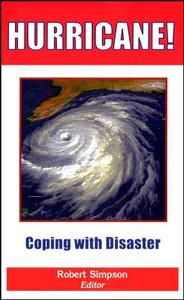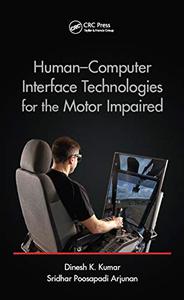 Hurricane! Coping with Disaster: Progress and Challenges Since Galveston, 1900 By
Hurricane! Coping with Disaster: Progress and Challenges Since Galveston, 1900 By2003 | 360 Pages | ISBN: 0875902979 | PDF | 9 MB
Published by the American Geophysical Union as part of the Special Publications Series.Hurricane research implicates something more than science. It is the key to saving lives and mitigating economic damage. From the Galveston catastrophe of 1900, where more than 8,000 people died, to the economic devastation wrought by Hurricane Andrew in 1992 in the United States, scientists have striven to understand and track hurricanes while charting their societal effects. Hurricane! Coping with Disaster tells the dramatic history of that effort by leading meteorologists?the men and women who brought hurricane science into the 21st century, and those who sustain it today. for readers everywhere interested in climatology, hurricane research, the historical background, and more.Content: Chapter 1 Twentieth Century Challenges and Milestones (pages 3-37): William M. GrayChapter 2 Impact of Technologies from Two World Wars (pages 39-61): Edward N. Rappaport and Robert H. SimpsonChapter 3 Hurricane Surveillance by Specially Instrumented Aircraft (pages 63-101): Robert C. SheetsChapter 4 Evolution of Prediction Models (pages 103-126): Mark DeMaria and James M. GrossChapter 5 The Great Galveston Hurricane of 1900 (pages 128-140): Neil L. FrankChapter 6 Social Choice in Dealing with Hurricanes (pages 141-153): Mary Frances Myers and Gilbert F. WhiteChapter 7 Communicating Damage Potentials and Minimizing Hurricane Damage (pages 155-164): Herbert S. SaffirChapter 8 Reducing Vulnerability (pages 165-173): Roger A. PielkeChapter 9 A Century of Scientific Progress: An Evaluation (pages 177-204): Kerry EmanuelChapter 10 A Century of Progress in Tracking and Warning: Improvements in Observations, Models, and Forecasts (pages 205-216): H.E. WilloughbyChapter 11 The Burgeoning Role of Weather Satellites (pages 217-247): C. Velden, J. Simpson, W. Timothy Liu, J. Hawkins, K. Brueske and R. AthensChapter 12 Present Day Satellite Technology for Hurricane Research: A Closer Look at Formation and Intensification (pages 249-289): E.A. Ritchie, J. Simpson, W.T. Liu, J. Halverson, C.S. Velden, K.F. Brueske and H. PierceChapter 13 Continuous Monitoring of the Hurricane Core: Availability of New Long?Endurance Small Drone Aircraft (pages 291-304): Greg Tyrrell and Greg HollandChapter 14 Hurricane Upper Level Wind Measurements: Applications of Doppler Lidar (pages 305-315): G. David EmmittChapter 15 A Century After Galveston, 1900: A Personal Perspective and Outlook (pages 317-334): Greg Holland



![S.T.A.L.K.E.R. 2 / STALKER 2: Heart of Chornobyl - Ultimate Edition (2024) [+UPDATE 23.12.2024 - v1.1.3] ElAmigos / Polska wersja językowa](https://i.postimg.cc/Zqd8RWGY/UZG8PBE.jpg)



















































![David Gilmour - Luck and Strange (2024) [FLAC]](https://i.imgur.com/everaBc.jpeg)
![Męskie Granie Orkiestra - Męskie Granie 2024 (2024) [FLAC]](https://i.imgur.com/FAyOxrM.jpeg)
![The Rolling Stones - Hackney Diamonds (2023) [FLAC]](https://i.imgur.com/wCkyyUN.jpg)
![Lady Gaga - Harlequin (2024) [FLAC]](https://i.imgur.com/dcgIA8D.jpeg)
![Natalia Kukulska - Dobrostan (2024) [FLAC]](https://i.imgur.com/bdljG3O.jpeg)
![Kaśka Sochacka - Ta druga (2024) [FLAC]](https://i.imgur.com/hORQKvn.jpeg)
![Kuba Sienkiewicz - Pani Bóg (2024) [FLAC]](https://i.imgur.com/qijCx8Z.jpeg)
![Lanberry - Heca (2024) [FLAC]](https://i.imgur.com/8P7QfeR.jpeg)
![Sara James - PLAYHOUSE (2024) [FLAC]](https://i.imgur.com/m4f8OKg.jpeg)
![Grzegorz Hyży - EPILOG (2024) [FLAC]](https://i.imgur.com/8DA2sBr.jpeg)
![Myslovitz - WIECZORAMI CHŁOPCY WYCHODZĄ NA ULICE (2024) [FLAC]](https://i.imgur.com/l9mMtIG.jpeg)
![Krzysztof Zalewski - ZGŁOWY (2024) [FLAC]](https://i.imgur.com/vh48RAc.jpeg)
![Krzysztof Cugowski - Wiek to tylko liczba (2024) [FLAC]](https://i.imgur.com/SBzgqe2.jpeg)
![Nosowska - Kasia i Błażej (2024) [FLAC]](https://i.imgur.com/mObvVXQ.jpeg)
![sanah - Pianinkowe Kaprysy (2024) [FLAC]](https://i.imgur.com/pVjjPAa.jpeg)
![Kwiat Jabłoni - Pokaz slajdów (2023) [FLAC]](https://i.imgur.com/diERHfZ.jpg)
![Robert Cichy - Spacer po Warszawie (2024) [FLAC]](https://i.imgur.com/ixleU9o.jpeg)
![Viki Gabor - Terminal 3 (2024) [FLAC]](https://i.imgur.com/Q1KCnDs.jpeg)
![Sanah - Kaprysy (2024) [FLAC]](https://i.imgur.com/71OZm4h.jpeg)
![Męskie Granie Orkiestra - Męskie Granie 2023 (2023) [FLAC]](https://i.imgur.com/U4YHo8d.jpg)




